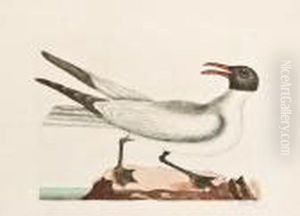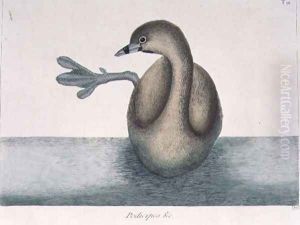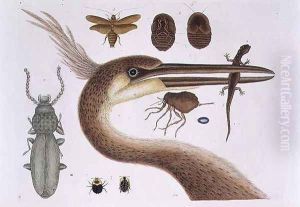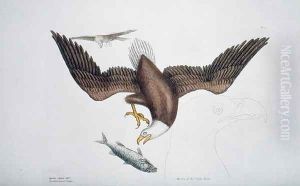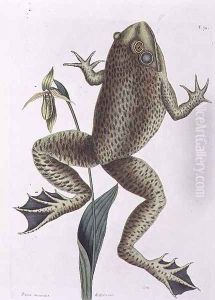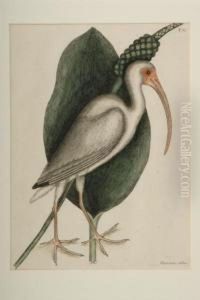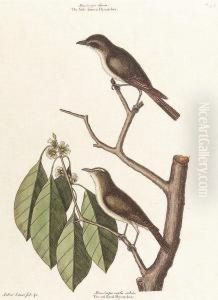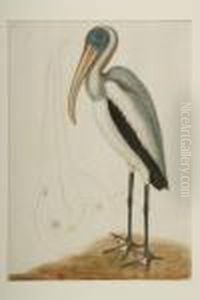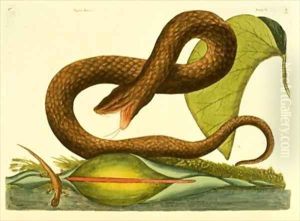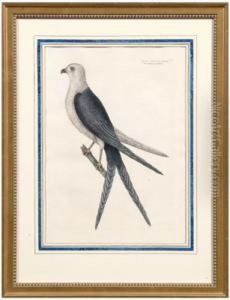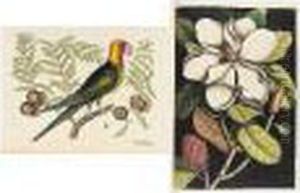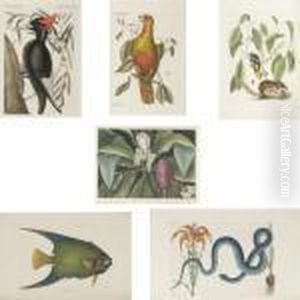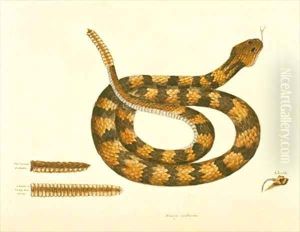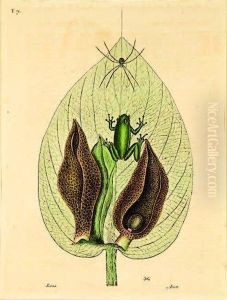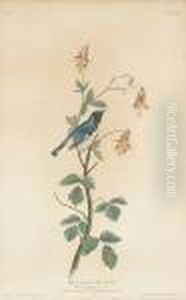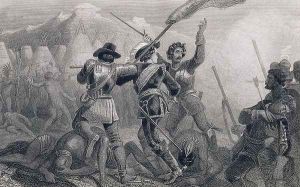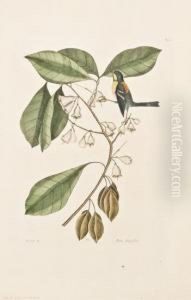





Finch Creeper (parula Warbler). [pl. 64, Vol. I].
-
About Reproduction
Discover the allure of art with our faithful reproduction of "Finch Creeper (parula Warbler). [pl. 64, Vol. I].", originally brought to life by the talented Mark Catesby. Unlike posters or prints, our hand-painted oil painting breathes an unique sense of depth and texture into your space. Every detail, every stroke, and every texture is meticulously recreated, paying the perfect homage to Mark Catesby and his artistic vision.
Owning this piece is more than just decoration - it's a statement of your refined taste in art. Let the vibrant colors and intricate details of this replica serve as a daily reminder of the beauty in our world. Elevate your decor and appreciate the richness of art with our replica of this masterpiece.
-
Painting Description
Mark Catesby, an eminent English naturalist, is celebrated for his pioneering work in documenting the flora and fauna of North America. One of his notable contributions is the illustration of the Finch Creeper, also known as the Parula Warbler, which is featured in Plate 64, Volume I of his seminal publication, "The Natural History of Carolina, Florida and the Bahama Islands." Published between 1729 and 1747, this work is regarded as one of the earliest comprehensive studies of North American wildlife.
Catesby's illustration of the Finch Creeper is a testament to his meticulous observation and artistic skill. The Parula Warbler, a small songbird belonging to the family Parulidae, is depicted with remarkable accuracy and attention to detail. The bird is shown in its natural habitat, perched on a branch, which adds context to its ecological niche. Catesby's depiction captures the vibrant plumage and delicate features of the warbler, showcasing his ability to blend scientific precision with artistic expression.
The Finch Creeper, or Parula Warbler, is known for its distinctive blue-gray upperparts, yellow throat and chest, and white wing bars. It inhabits a variety of forested environments, particularly favoring areas with abundant moss and lichen, which it uses for nesting. Catesby's illustration not only highlights the bird's physical characteristics but also provides insights into its behavior and habitat preferences.
Catesby's work was groundbreaking for its time, as it provided European audiences with their first detailed look at many North American species. His illustrations were accompanied by descriptive text, offering valuable information on the species' habits, diet, and distribution. The Finch Creeper illustration is a prime example of how Catesby's work bridged the gap between art and science, contributing significantly to the field of natural history.
Overall, Mark Catesby's illustration of the Finch Creeper in Plate 64, Volume I, remains an important historical document. It reflects the early efforts to catalog and understand the rich biodiversity of the New World, and continues to be a valuable resource for ornithologists, historians, and art enthusiasts alike.
-
Lead Time & Shipping
When you order this oil painting replica, it typically takes 2-3 weeks to paint. If the artwork is more complex, it might need a little more time to ensure the best quality. Once it's ready, we'll send you a photo for your approval. After you give the green light, we'll ship it to you for free.
-
Return & Refund
We believe in the quality of our hand-painted oil painting reproductions, and your satisfaction is our priority. If for any reason, you are not completely satisfied with your purchase, we offer a 45-day return policy. You can return your artwork within 45 days of receipt and receive a full refund. Please note that the artwork must be returned in the original packaging and in the same condition as it was received.
![Finch Creeper (parula Warbler). [pl. 64, Vol. I]. Oil Painting by Mark Catesby Finch Creeper (parula Warbler). [pl. 64, Vol. I]. Oil Painting by Mark Catesby](https://www.niceartgallery.com/imgs/1224157/l/mark-catesby-finch-creeper-parula-warbler-pl-64-vol-i-295b8678.jpg)




